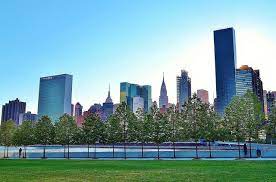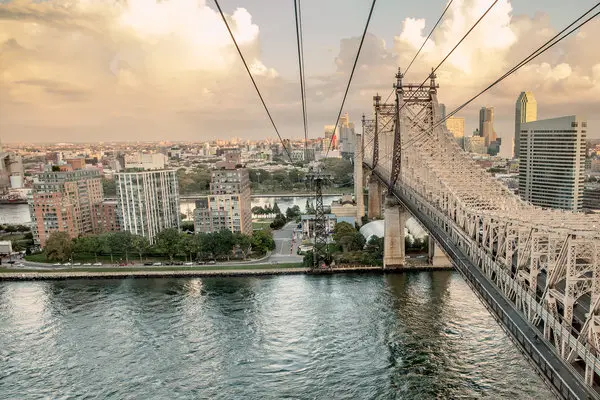Nestled in the heart of the East River, between the bustling boroughs of Manhattan and Queens, lies a tranquil oasis that offers a unique blend of urban convenience and serene living. Roosevelt Island, a narrow, two-mile-long strip of land, is home to a diverse and close-knit community that has discovered the beauty of this hidden gem. In this article, we’ll take a closer look at what it’s like to live on Roosevelt Island and why it’s an attractive place to call home.
History and Overview
Roosevelt Island, formerly known as Welfare Island, has a rich history dating back to the 19th century. Its name changed in 1971, commemorating President Franklin D. Roosevelt, in honor of his commitment to social reform. Over the years, this island has evolved from a place that once housed hospitals and asylums to a vibrant residential community.
Living on Roosevelt Island
- Peaceful Island Living
One of the standout features of life on Roosevelt Island is the tranquility it offers. Away from the hustle and bustle of Manhattan, residents here enjoy a slower pace of life. The island’s peaceful atmosphere is perfect for those seeking respite from the fast-paced city living without sacrificing convenience.
- Breathtaking Views
Roosevelt Island boasts stunning views of the East River and the Manhattan skyline. The iconic Queensboro Bridge connects the island to Manhattan, providing residents with breathtaking vistas both day and night. Whether you’re jogging along the scenic East River promenade or sipping coffee from one of the island’s cafes, you’ll be treated to a unique perspective of the city that never sleeps.

- Diverse Community
The island is home to a diverse community, including families, young professionals, and retirees. This blend of generations and backgrounds creates a welcoming and inclusive environment. With a limited number of residents, Roosevelt Island has the charm of a small town, where neighbors become friends, and the sense of community is strong.
- Excellent Transportation
Living on Roosevelt Island doesn’t mean being isolated from the city. Residents have access to a variety of transportation options. The iconic Roosevelt Island Tramway connects the island to Manhattan, offering breathtaking aerial views during the short ride. There are also subway and bus lines for convenient travel around the city.
- Beautiful Parks and Outdoor Spaces
For those who appreciate green spaces, Roosevelt Island has several parks and outdoor recreational areas to enjoy. Four Freedoms Park, named after President Franklin D. Roosevelt’s famous speech, is a tranquil, open space for reflection. Lighthouse Park is another popular destination, offering a riverside picnic area and a glimpse into the island’s history.
- Cultural Attractions
Despite its size, Roosevelt Island offers a variety of cultural attractions. The Roosevelt Island Historical Society and the Octagon Arts Center provide insight into the island’s history and host cultural events and exhibitions. The island also hosts an annual Fall for Arts festival, showcasing local talent.

Roosevelt Island is a narrow island located in the East River of New York City. It is situated between the boroughs of Manhattan and Queens. The island is approximately 2 miles (3.2 kilometers) long and covers an area of about 147 acres (0.6 square kilometers). Roosevelt Island has a fascinating history and is known for its unique character and attractions.
Here are some key points about Roosevelt Island:
- Historical Significance: Originally known as Blackwell’s Island, it was renamed Welfare Island in the 1920s and later Roosevelt Island in 1971 in honor of President Franklin D. Roosevelt. The island has served various purposes over the years, including as the site of institutions like hospitals, prisons, and asylums.
- Access: Roosevelt Island is accessible by the Roosevelt Island Tramway, which connects the island to Manhattan. Additionally, there is a subway station (Roosevelt Island station) on the F train line, as well as a bridge (the Roosevelt Island Bridge) that connects it to Queens.
- Residential Community: Today, Roosevelt Island is a residential community with a diverse population. It has apartment buildings and condominiums, providing housing for a mix of people, including families, students, and professionals.
- Attractions: The island is home to several notable attractions, including Four Freedoms Park, a memorial park dedicated to Franklin D. Roosevelt; the Octagon, a historic building that was once part of a hospital; and the Roosevelt Island Historical Society’s Visitor Center, which provides information about the island’s history.
- Cornell Tech: In recent years, Cornell Tech, a technology-focused graduate school, has established a campus on the southern tip of Roosevelt Island. This campus focuses on technology and innovation and has contributed to the island’s transformation into a center for education and entrepreneurship.
- Parks and Recreation: The island features various parks, walking paths, and recreational areas, making it a peaceful and attractive place to live and visit. The waterfront promenade offers beautiful views of the Manhattan skyline.

Roosevelt Island’s unique location, history, and mix of residential and cultural attractions make it a distinctive part of New York City. It offers a quieter and more relaxed atmosphere compared to the bustling streets of Manhattan while still being conveniently connected to the city’s amenities.
Conclusion
Roosevelt Island is a remarkable place to call home, offering the perfect blend of tranquility and urban living. Its unique location, diverse community, and stunning views make it a desirable destination for those seeking a quieter, more peaceful environment without sacrificing the conveniences of city life. Whether you’re taking in the breathtaking views from the tramway or strolling along the East River promenade, Roosevelt Island offers a slice of paradise in the heart of the city.

